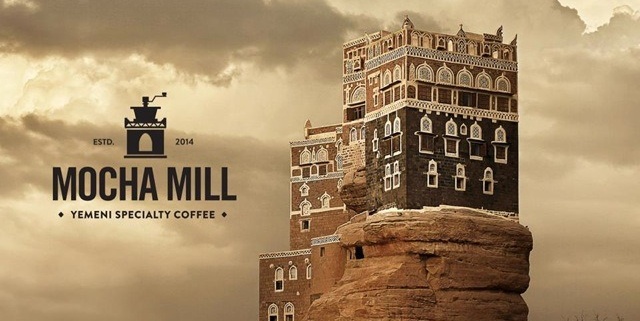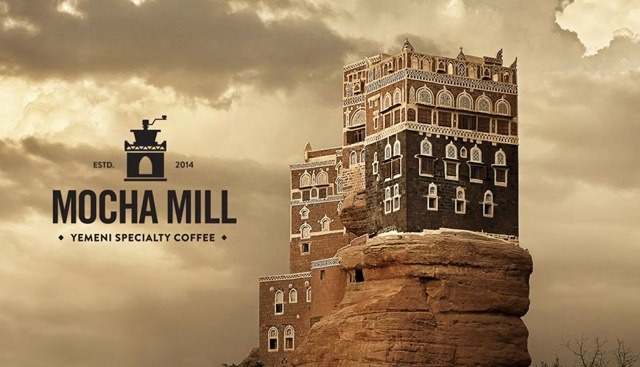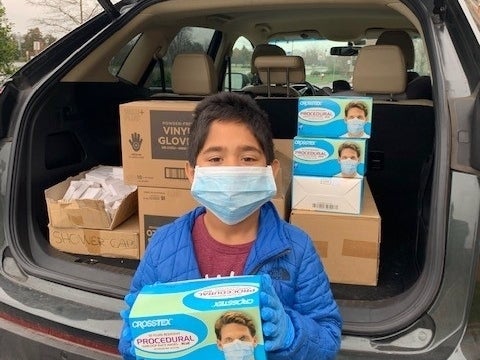Coffee at its Origin
The Journey of One Company Working to Save Yemeni Coffee
As President and Founder of Mocha Mill – Yemeni Specialty Coffee, 26-year-old Mokhtar Alkhanshali, is spearheading a powerful social mission that bridges his Yemeni heritage and a burgeoning global coffee industry. His family has been growing coffee for hundreds of years in Yemen, the first place to cultivate and commercialize coffee in the world. Recently, Alkhanshali became the first Arab to be certified as a specialty coffee Q grader, an expert that can assess the quality of coffee. His aim is to put Yemeni coffee back at forefront of the global coffee trade by creating sustainable farming models for Yemeni farmers, 75% of which are women.
What inspired you to create Mocha Mill?
The decline of coffee production in Yemen is so scary. In 1857 Yemen was exporting 57,000 tons of coffee from the port city of Mocha. Now, in 2014, Yemen as a whole produces 18,000 tons a year. It has declined at such a rapid pace that if something is not done quickly then Yemeni coffee will quite simply cease to exist.
My family has been growing coffee for at least nine generations and going back to Yemen as a kid I used pick coffee cherries with my grandmother. She would take them to the local mill where they would hull them, process them and she would then take it to them roast, grind and mixed them with spices like cardamom, and ginger and sugar, making it smell and look different then coffee. I just thought that those cherries were some weird Yemeni kind of tea that my grandmother would make me. We call it bunn, the same word as in Amharic bunna, meaning the bean.
What happened to coffee industry in Yemen and what is your company doing to revitalize it?
That was one of the first questions I had coming into coffee. I remember I walked into Blue Bottle roasters in Oakland and I spoke to Stephen Vick, their green coffee buyer, and I mentioned Yemen. He said, “there was a time ten years or so ago when Yemeni coffee was known and it was great, but unfortunately the quality has gone down dramatically, it’s very inconsistent, and it’s extremely hard to get.” I kept hearing these same things from different people. So clearly over the last ten years something happened. The only way to really get to the bottom of this was to go to Yemen on what would become a trip that changed my life.
It was a three month long coffee exploration and I did an in depth analysis of the supply chain, as I was able to go to 32 different areas that grow coffee in Yemen. I used old Arabic books on the history of coffee and the old Mocha route paired with USAID and United Nations reports on coffee, and every place I went I got a piece of the puzzle to help me understand what is going on with coffee in Yemen.
By the time the coffee makes it to the exporter it has been mixed from different regions. It is very old and no one has any idea where it comes from. That’s why a lot of people don’t want to buy Yemeni coffee. It is more expensive then any other coffee and often times the quality is really bad. Part of my work is starting right at the beginning with farmers. I only work with farmers and cooperatives. This helps us control the quality of the coffee and traceability.
 |
President & Founder of Mocha Mill, Mokhtar Alkhanshali tasting coffee cherries for sugar levels in Yemen (Photo Credit: Mocha Mill) |
Few people know the true story of what you actually went through to bring these coffees back to he US, can you talk about some of the places you visited in this trip and some of the obstacles that you faced?
I left for Yemen in the first week of May. My consultant Willem Boot from Boot Coffee came with me along with Camilo Sanchez from the Coffee Quality Institute. We were in a hotel in Sana’a and unfortunately we came on the eve of the US/ Yemeni offensive against al-Qaeda in Southern Yemen. Drones killed sixty-six people, and unfortunately a lot of them were civilians. It was a very difficult time. U.S. officials would not let Willem or Camilo leave their hotel, and after two days they forced them to leave the country.
After they left, I decided to go through with my plan of visiting all these coffee growing areas and doing my research and exploration. When I went to these areas I was under a lot of stress and a lot of danger.
I was ambushed eleven times by tribal ambushes, groups that have issues with different tribes or with the government. They will come out of nowhere with their rifles and RPG-7 rocket launchers and ask you for your ID to see where you were from. If you happen to be from a tribe that they have an issue with they will take you as a hostage. Unfortunately during these ambushes there were a lot of close calls.
On top of that, the physical difficulties of hiking up these mountains and mountain ranges for days at times to get to these coffee areas was crazy. Sometimes I would spend a whole two days or three days going somewhere to find out they don’t have coffee there. Maybe 100 years ago there was coffee there according to this book I was reading, but also I found places that I could have never imagined in my wildest dreams: coffee paradises, whole mountain ranges, and terraces full of coffee. Meeting these farmers and living with them was so incredible. They were so generous, so beautiful and so simple. I met coffee farmers who didn’t know how to use currency. They have lived their entire lives just bartering for wheat, or barley, or whatever they need.
At the core of Mocha Mill is your social mission. How are you serving the farmers and the communities that you are working in?
Our primary goal and mission is to produce traceable, specialty grade Yemeni coffee at their origin by radically improving and streamlining the supply chain. To do this, we are working directly with farmers and cooperatives by establishing “Coffee Collection Centers” (CCC) and a state-of-the-art processing mill. We believe that if we give the coffee farmers the knowledge and the tools necessary, it will improve the quality of their coffees and lives because they will be able to sell their coffees at a higher price through our company, which will give them access to Western markets and Asian markets. This will put money in their hands that they can actually use in their cooperatives – to build schools, to build hospitals, to feed their families.


















2014
1,085 views
views
0
comments